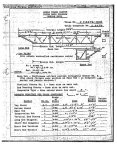gamolon
DP Veteran
- Joined
- Feb 3, 2015
- Messages
- 3,549
- Reaction score
- 612
- Gender
- Undisclosed
- Political Leaning
- Undisclosed
Reading comprehension gerrycan! You clearly have none. What did my quote say about those numbers? Here, I'll help you out. Again. I'll even hilite the relevant part of the quote for you.This is about what that means in terms of the ends though, and what it changes. Quoting the numbers from the sheet isn't the issue or the answer Gamolon, understanding the relevance of those numbers is and you clearly don't.
The long span truss end? We don't know as of yet. It'll be anywhere from 3'-0 1/2" to 5'-2 1/2" per the drawing below shown under "Dimension A".
View attachment 67236236
I wonder where gerrycan ran off to?
:mrgreen:
What does that tell you gerrycan? It shows that I said the truss ends would vary anywhere from 3'-0 1/2" to 5'-2 1/2" and that I clearly understood that.
Duh.
Come on now. You're not even trying. Stop playing games already. It's making you look bad.



